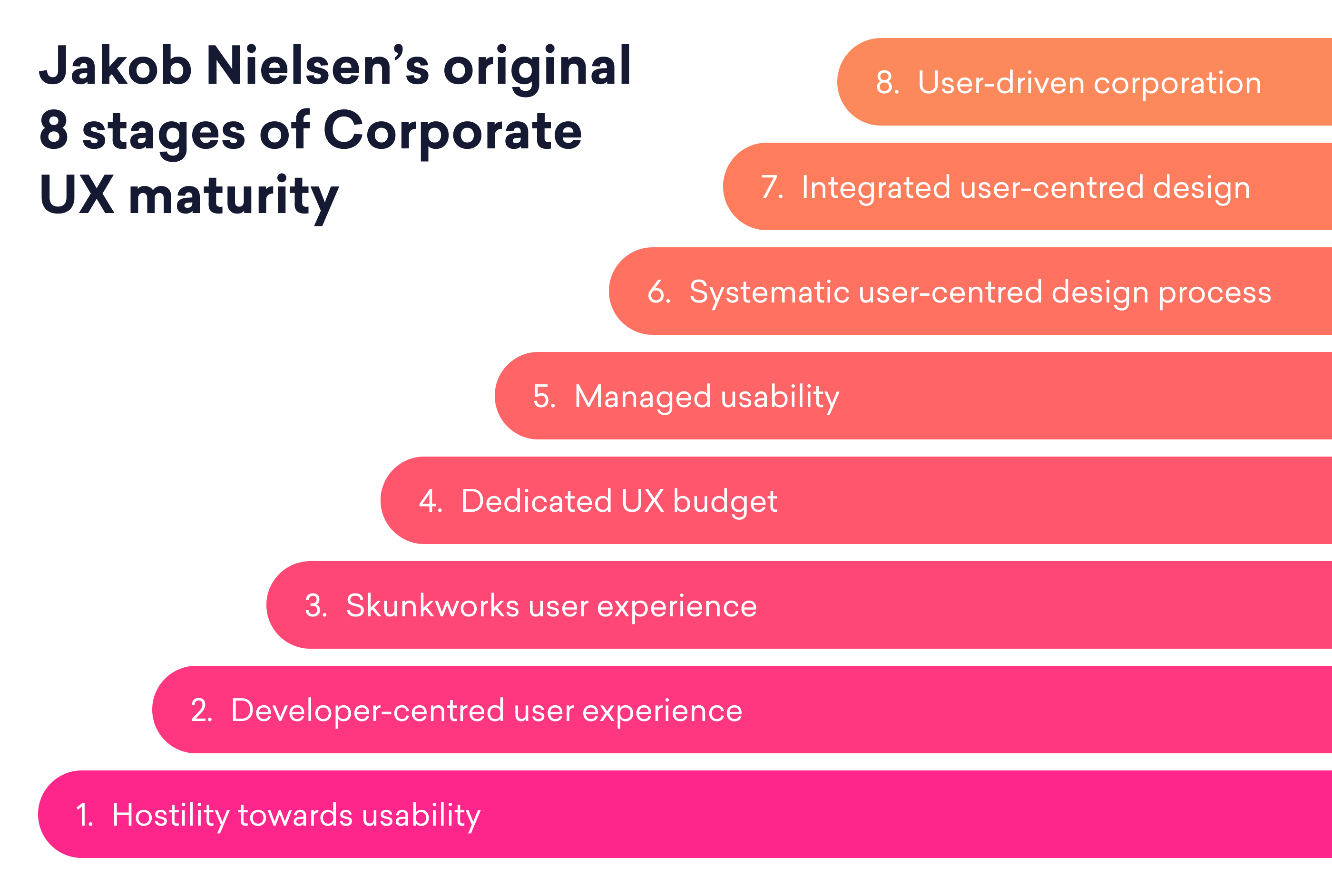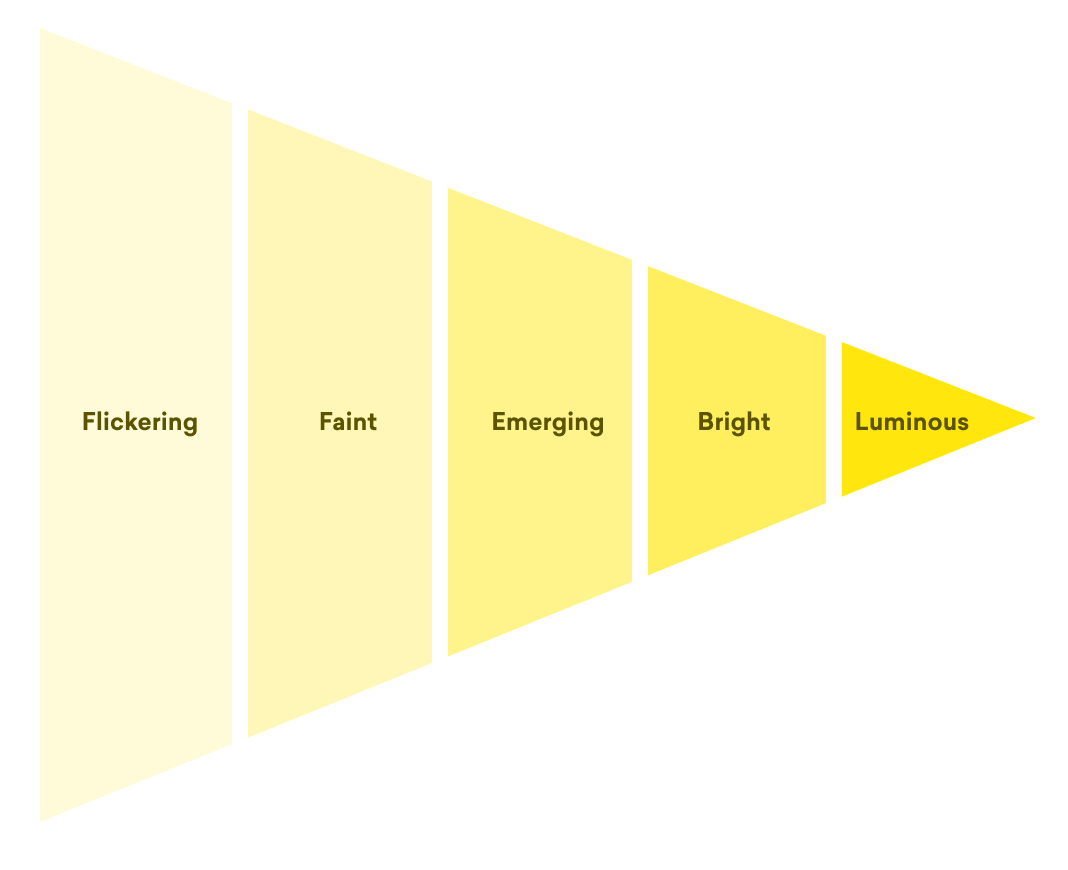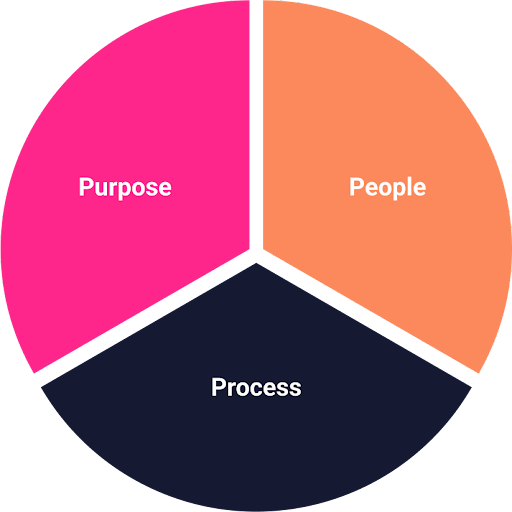Do you know how mature your organisation is?
No, we don’t measure this by how much toilet humour your internal Slack contains, or whether you’re mostly of an age to remember dial-up.
We’re talking about product maturity; the level of robust processes and capability to deliver user-centric products and services.
Put the whoopee cushions away.🤡
What’s a product maturity framework?
Using a framework to understand where an organisation is up to with this isn’t a new concept.
Grandpa of UX Jakob Neilsen had the first pass at such a model in 2006.
He initially defined 8 stages of corporate UX maturity (refined to 6 in 2021), ranging from the openly hostile stance whereby ‘a good user is a dead user’ 😲 to the perfectly user-centric business where every strategic decision is informed by user research.

Showing wins and uncovering blindspots makes a product maturity framework a powerful asset to any business serious about their journey to user-centricity.
The difficulty of assessing product maturity
We’ve found that organisations can struggle to evaluate their product maturity internally.
With the best will in the world, it’s hard to critically evaluate your own position without the use of a strong framework and a way to mitigate against the biases we all hold.
Self-diagnosis is notoriously tricky!
Organisations looking to put users at the heart of their operations can also feel it’s too overwhelming a task to ‘fix’ everything at once.
Where’s best to start? What actions are needed to make the biggest change?
Fear of doing the wrong thing can lead to getting stuck in a state of paralysis, despite the best of intentions.
How to break out of ‘business as usual’ for product success
Taking the first step to change can be daunting, especially when your product is big. Here are a few actionable ideas to help. 🙌
Enter Lightouse Product Beacon
At Lighthouse we’ve spent years helping businesses finesse their internal design teams and processes, so decided it was about time to turn this knowledge into a framework of our own.
It helps the forward-thinking organisations we work with shine, giving them actionable steps to take forward and achieve complete maturity. ☀️
Because we can’t resist a good light-based name, we’ve called it the Lighthouse Product Beacon.

Measuring product maturity
When assessing maturity, we’re interested in how well an organisation is performing in three main areas, conveniently all beginning with P.
- The product vision (purpose)
- The product team (people)
- The approach to designing products (process)

High and low product maturity in practice
The easiest way to explain the three areas we’re concerned with is to imagine the attributes of an organisation doing well in each (scoring at the ‘luminous’ end of our scale), and then one where more work is needed (sitting on the ‘flicking’ portion of it).
High product maturity | Low product maturity | |
Purpose - How work undertaken is connected to an organisation's wider purpose, vision and strategy. |
|
|
People - How connected team members feel to both each other and the work done. |
|
|
Process - How teams tackle the work to be done. |
|
|
Profitability
Mature organisations are 60% more profitable than their counterparts
60%
Want to run your organisation through the framework?
Have the examples above have got your mind spinning with ideas for product maturity improvements within your own organisation?
Even when we work with businesses who sit at the very top end of our framework, the benefits of assessing what works and why are immense.
Regardless of the activities you’re already undertaking, increasing understanding and awareness of your level of maturity can only be a good thing.
No business is ever perfectly mature, and the process of measuring, learning and taking action is one that forward-thinking leadership teams embrace and enjoy.
Lighthouse Product Beacon
Find out how mature your organisation is 🔎

